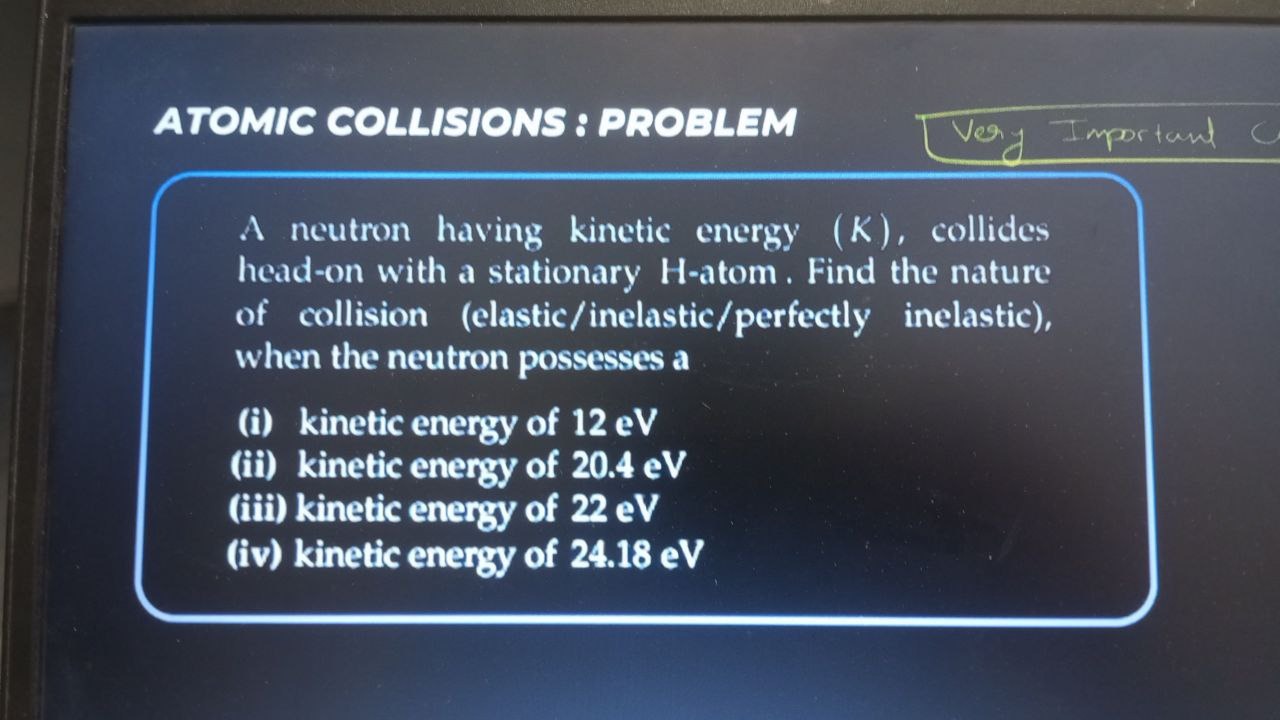Question
Question: A neutron having kinetic energy (K), collides head-on with a stationary H-atom. Find the nature of c...
A neutron having kinetic energy (K), collides head-on with a stationary H-atom. Find the nature of collision (elastic/inelastic/perfectly inelastic), when the neutron possesses a kinetic energy of: (i) 12 eV (ii) 20.4 eV (iii) 22 eV (iv) 24.18 eV

12 eV: Elastic; 20.4 eV: Inelastic; 22 eV: Inelastic; 24.18 eV: Inelastic
12 eV: Inelastic; 20.4 eV: Elastic; 22 eV: Elastic; 24.18 eV: Elastic
12 eV: Elastic; 20.4 eV: Elastic; 22 eV: Inelastic; 24.18 eV: Inelastic
12 eV: Inelastic; 20.4 eV: Inelastic; 22 eV: Elastic; 24.18 eV: Elastic
12 eV: Elastic; 20.4 eV: Inelastic; 22 eV: Inelastic; 24.18 eV: Inelastic
Solution
The minimum energy required to excite a hydrogen atom from its ground state (n=1) to the first excited state (n=2) is ΔE=E2−E1=−3.4 eV−(−13.6 eV)=10.2 eV.
For a head-on collision between a neutron and a stationary hydrogen atom of approximately equal masses, the collision becomes inelastic if the neutron's initial kinetic energy (Ki) is sufficient to cause excitation. The threshold kinetic energy (Kth) for an inelastic collision is given by Kth=2×ΔEmin.
Using ΔEmin=10.2 eV: Kth=2×10.2 eV=20.4 eV.
If K<Kth, the collision is elastic. If K≥Kth, the collision is inelastic.
(i) Kinetic energy of 12 eV: 12 eV<20.4 eV⟹ Elastic collision. (ii) Kinetic energy of 20.4 eV: 20.4 eV=20.4 eV⟹ Inelastic collision. (iii) Kinetic energy of 22 eV: 22 eV>20.4 eV⟹ Inelastic collision. (iv) Kinetic energy of 24.18 eV: 24.18 eV>20.4 eV⟹ Inelastic collision.
